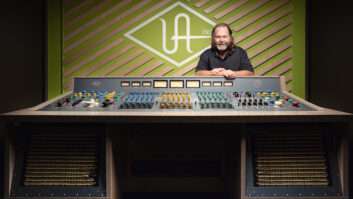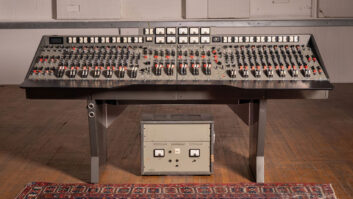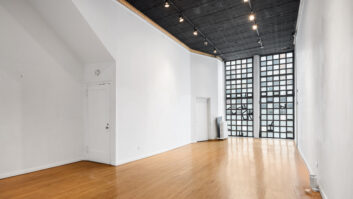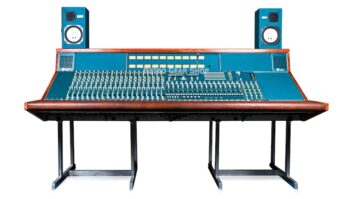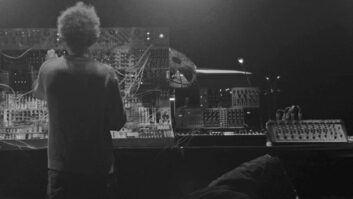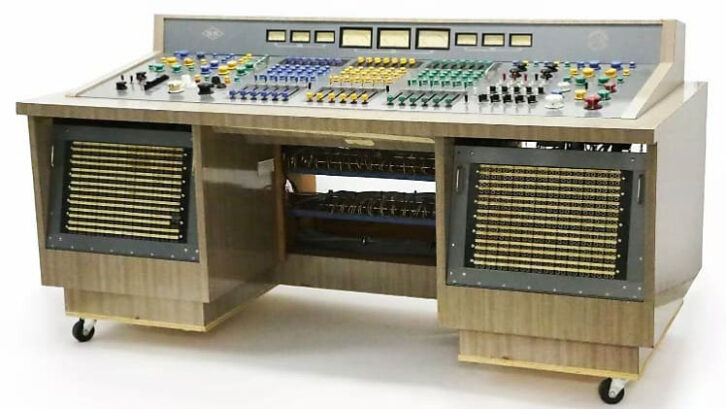
Los Angeles, CA (July 7, 2023)—A few rare vintage mixing desks have stellar lineages and legendary components, but a former Ceasars Palace Universal Audio tube mixing console recently announced as “for sale” is arguably in a class of its own. Built in 1966, the desk has long seen its share of greatness, from the pros that created it to the performers heard through it, but a bit of research reveals just how unusual the desk is.
Being sold by LA Vintage Audio through Reverb.com, the console was originally built for Caesars Palace and incorporates 38 UA 1008 tube preamp modules; 21 UA 508 EQ modules on each channel and the echo sends; three UA 550 filters; three UA 500 EQs; and three Langevin 252 Graphic EQs; plus color-coded Langevin faders—blue, yellow and green—in three banks of six.
The desk was built by Studio Electronics Corp., one of two manufacturing subsidiaries—the other being Universal Audio—of parent company United Recording Corp., founded by Bill Putnam Sr. The two electronics makers were based at 6000 Sunset Blvd. in Hollywood at what was then known as Western Recorders, one of Putnam’s four locations at the time, three in California and one in Nevada.
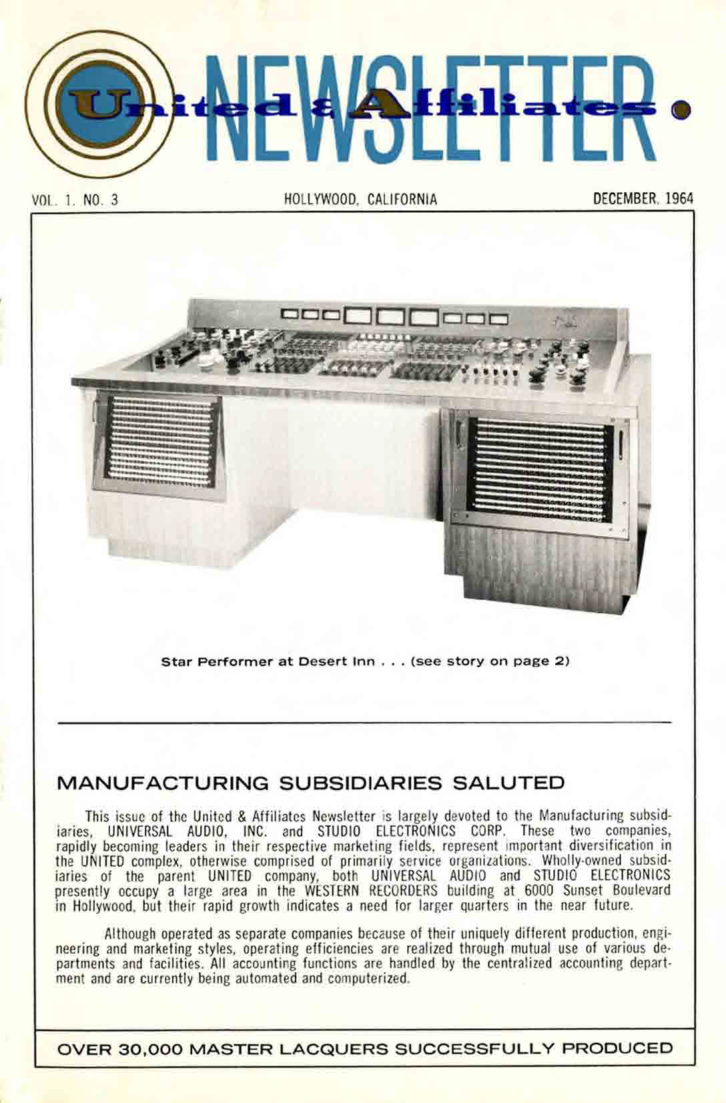
The December, 1964 edition (Vol. 1, No. 3) of the United & Affiliates Newsletter published by United Recording offers two earlier glimpses of SEC’s custom live sound consoles. The first is a desk that looks very similar to the one currently for sale, which was delivered to the Desert Inn in Las Vegas in late 1963. It had been in operation seven days a week, two shows a day, “without failure and only with routine maintenance,” for an entire year at the time of publication.
The second was a 12-microphone input console, part of a larger sound system incorporating amps, speakers, “reverberation facilities” and intercommunication systems for the Tallyho Hotel. The entire system was set to go live on January 1, 1965, when the casino’s gaming license finally became effective, according to the newsletter. By the end of 1965, the Tallyho had become the Aladdin.
The March, 1966 edition of the United & Affiliates Newsletter reveals that SEC had recently become a licensed Nevada state contractor and had set up a branch office in Las Vegas. United’s link to Las Vegas is hardly surprising, of course. After all, Putnam had essentially become Frank Sinatra’s personal studio engineer, not to mention an honorary member of the Rat Pack, and the singer had helped bankroll Putnam’s relocation from Chicago to Hollywood in the late 1950s. In 1960, Sinatra had also set up his own Reprise record label office at Western Recorders—where he insisted on always recording, with Putnam engineering—after his deal with Capitol expired.
On The Cover: Las Vegas Takes Immersive Live
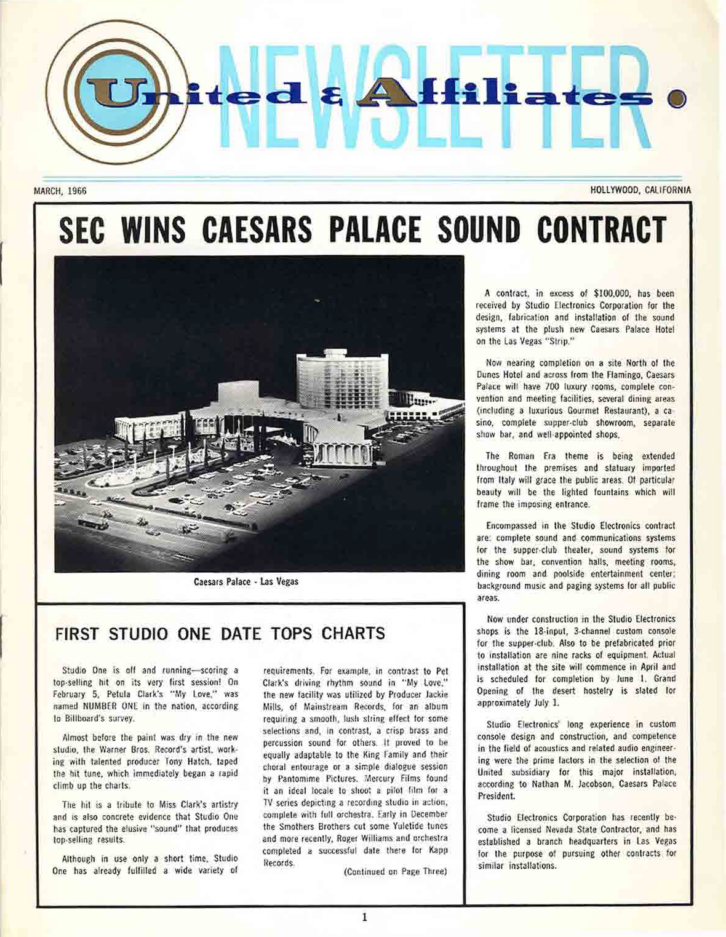
But the headline story in the March, 1965 edition was SEC’s latest Las Vegas project: “A contract, in excess of $100,000, has been received by Studio Electronics Corporation for the design, fabrication and installation of the sound systems at the plush new Caesars Palace Hotel on the Las Vegas ‘Strip.’” The contract (worth nearly $1 million in today’s money) included an 18-input, three-channel custom console—the desk now for sale—for the Circus Maximus supper club. Unusually, the console also included various non-audio functions, long since removed, such as stage curtain control, LA Vintage Audio reports.
The Caesars Palace installation was set to begin in April, 1966, according to the newsletter, and would also include nine racks of equipment and sound systems for the show bar, convention halls, meeting rooms, dining room and poolside entertainment center, along with background music and paging systems in all the public areas. We now know that the 980-seat showroom opened on August 5, 1966 with a performance by Andy Williams.
Circus Maximus hosted a who’s-who of entertainment over the years, including Woody Allen, Sammy Davis Jr., George Burns, Judy Garland, Jack Benny, Milton Berle, Tom Jones, Petula Clark, Diana Ross, the Everly Brothers and many others, some of whom released live albums of their performances there. In 1967, after Howard Hughes acquired the Sands, Frank Sinatra, who had performed exclusively at the hotel for over a decade, quit and signed a three-year contract with Caesars Palace, where he would continue to appear, on and off, throughout the 1970s.
The final show at Circus Maximus was September 3, 2000. The venue was later razed to make way for another development. According to LA Vintage Audio, the showroom’s sound engineer took the console home once it was no longer required. Many of the component parts were subsequently sold off, but actor and musician Vincent Gallo purchased the desk, reportedly tracked down all the original amplifiers and spent years painstakingly restoring it to its former glory. The console was later sold to music producer Chris Nelson, who installed it at his Sound Space Studios in downtown Los Angeles, after which it landed with LA Vintage Audio.
